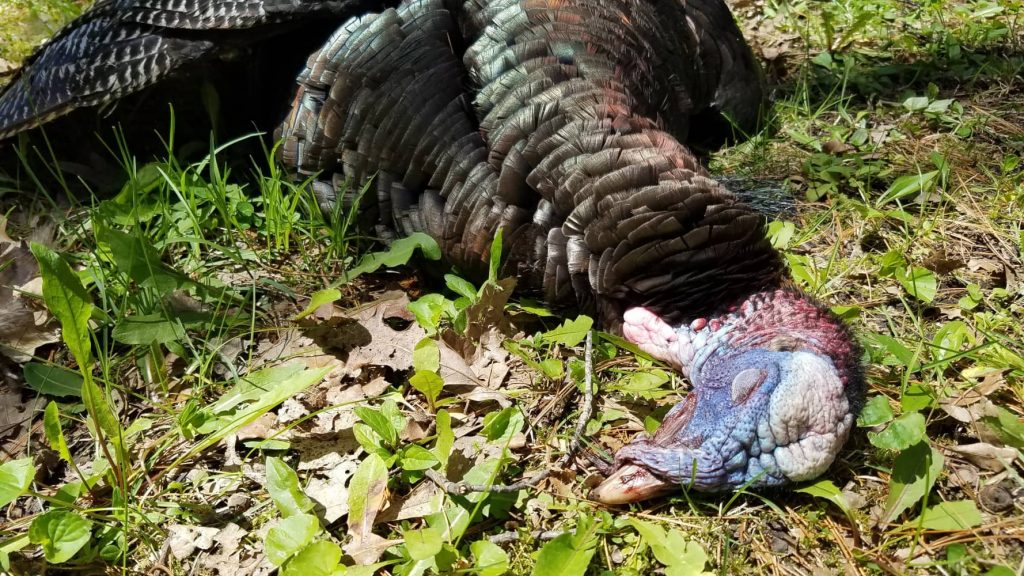
5 Turkey Hunting Tips for Better Preseason Scouting
Sounds of gobblers echoing across ridgetops are only weeks away. Successful turkey hunting requires more than just showing up on opening day. The only way to guarantee you notch a spring gobbler tag is to devote time to preseason scouting. Preseason scouting is essential for understanding turkey behavior, identifying prime hunting locations, and increasing your chances of calling in a bird. These turkey hunting tips will make your scouting more productive and give you confidence as opening day approaches.
Proven Turkey Hunting Tips to Dominate Preseason Scouting
Preseason scouting for turkeys is not rocket science. Also, it does not have to take weeks in the woods. Instead, the most important part of turkey scouting is being efficient and knowing exactly how to do it. Here are the 5 keys to scouting for turkeys in the spring.
- Locate Roosting Sites
- Listen for Gobblers
- Find Turkey Sign
- Scout Different Locations
- Minimize Preseason Encounters
Scouting for Turkeys Starts Now
Let’s briefly talk about when you should start scouting for turkeys. One of the best turkey hunting tips you can remember is preseason scouting should start when you need it to. Each hunter has to determine that based on the areas you hunt and past experiences. A hunting app like TrophyTracks is critical here as you can reference past hunting logs to narrow down areas to hunt.
Unless major habitat changes occur, turkeys will generally be in the same areas year after year. Start with known areas and expand out from there. New areas will require more time for scouting to locate roost sites, listening for gobblers, and finding sign. In contrast, past successful areas where you have seen and heard birds may only need a day of scouting to confirm nothing has changed, and there are still a few gobblers hanging around.

Locate Roosting Sites for Spring Birds
Turkeys typically roost in trees at night, making their roosting sites a crucial aspect of preseason scouting. Look for large trees with sturdy branches, preferably near open areas such as fields or meadows. Turkeys prefer roosting in areas where they have a clear view of their surroundings, allowing them to detect potential predators. Spend time in the early morning or late afternoon scanning these areas with binoculars to identify potential roosting sites. Once you locate roosting areas, mark them in your TrophyTracks hunting app.

Listen for Gobblers More Effectively With These Turkey Hunting Tips
The unmistakable sound of a turkey gobble is music to every hunter’s ears. During preseason scouting, take advantage of early mornings and evenings to listen for gobblers. Gobbling is most common during the spring mating season when toms are actively seeking out hens. By pinpointing areas where toms are gobbling, you can narrow down potential hunting spots. Locator turkey calls like a crow or owl call will elicit gobbles so you can mark their locations. Remember that toms may not always gobble on command, so patience is key.
Pro turkey hunting tip: Use a goose call as a locator call. Every hunter is blasting a crow or owl call. A goose call mixes it up and often gets a big, smart bird to disclose his location.
Find Turkey Sign Early
Turkeys leave behind a variety of signs that can clue you into their presence. Look for tracks, scratchings, droppings, and feathers in areas where turkeys frequent. Fresh scratchings in the leaf litter indicate recent turkey activity, while tracks can give you an idea of the size and number of birds in the area. Pay close attention to areas with a mix of hardwood and softwood trees, as turkeys often forage for food such as acorns and insects in these habitats. Use your hunting journal to make notes of the sign you find. It will help you narrow down opening-day turkey hunting hotspots to focus on and plan your hunting strategy.
Turkey Hunting Tips for Scouting Multiple Locations
Don’t limit yourself to scouting just one area. Turkeys can be unpredictable, and what may be a hot spot one day could be devoid of birds the next. Turkey hunting tips like scouting multiple locations will increase your chances of finding active birds in the spring. Explore different types of terrain, including fields, forests, and edges where these habitats meet. By scouting multiple locations, you’ll have backup options if your primary hunting spot doesn’t produce results.
Pro turkey hunting tip: Trail cameras can boost your preseason scouting. You can’t be in every place at once or you may be time-limited with your scouting. Set up trail cameras to monitor potential turkey hunting locations to narrow down hotspots to hunt.
Minimize Preseason Encounters
While scouting for turkeys, it’s essential to minimize your impact on their habitat. Avoid excessive noise and disturbance, as this can spook the birds and disrupt their natural behavior. Use binoculars and spotting scopes to observe turkeys from a distance, rather than getting too close and risking detection. Remember that turkeys have exceptional eyesight, so stealth and patience are vital when scouting. One of the biggest mistakes to avoid while scouting is spoking birds out of an area.
In conclusion, preseason scouting is a critical component of turkey hunting success. By locating roosting sites, listening for gobbling, looking for sign, scouting multiple locations, and avoiding detection, you’ll be better prepared to hunt effectively when the season opens. These preseason turkey hunting tips will prove vital in pinpointing birds and putting confidence into your plan for spring gobbler season.

